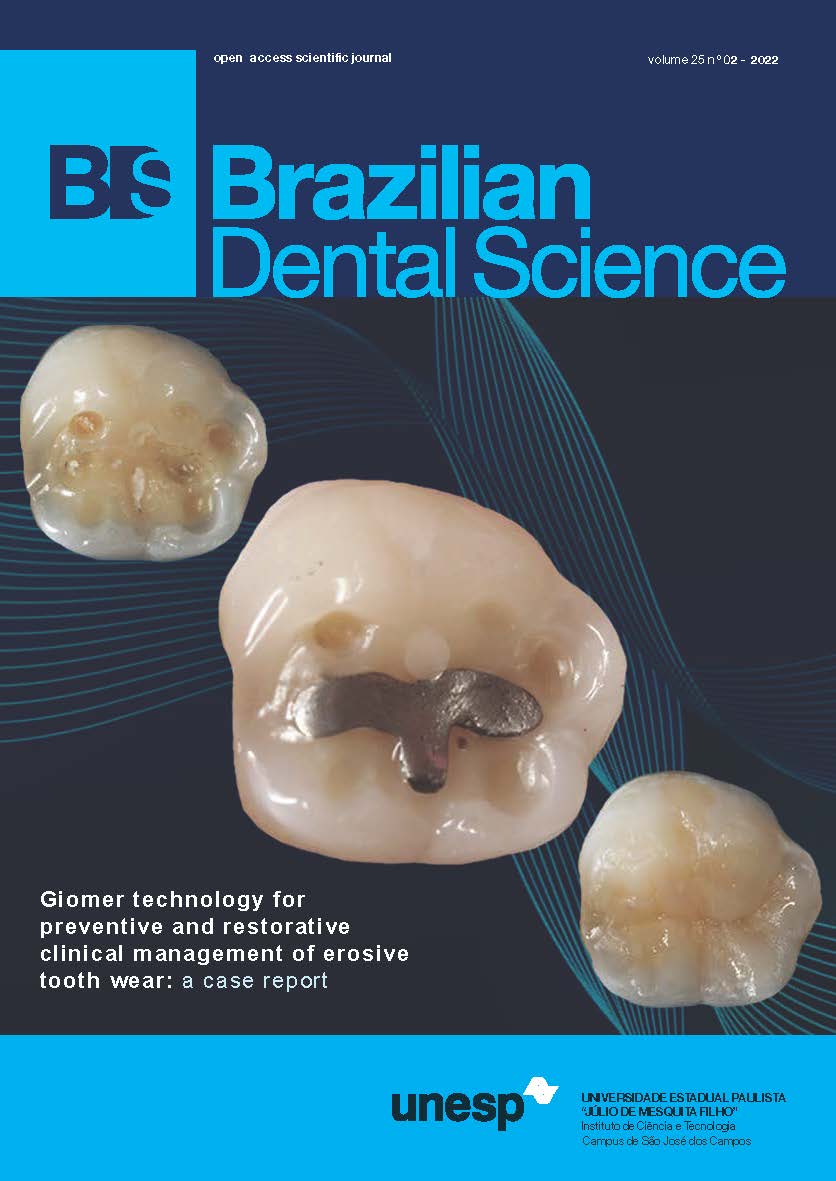Giomer technology for preventive and restorative clinical management of erosive tooth wear: a case report
DOI:
https://doi.org/10.4322/bds.2022.e3162Resumo
Increasing prevalence of erosive tooth wear (ETW) is notable mainly due to current knowledge and its early
diagnosis. Once teeth are functionally and/or esthetically affected, dental restorations may become necessary.
Materials capable of interacting with the eroded dental tissue allied to their resistance to subsequent continuous
erosive challenges are desirable. Giomer technology based on S-PRG (surface pre-reactive glass) filler has been
launching to provide benefits for the dental treatment due to its innovative multi-ionic release system, which
involves fluoride. This case report describes the employment of preventive and restorative materials based
on this technology for a patient under frequent erosive challenges and complaining about dental sensitivity.
Patient reported immediate reduction on this sensitivity and the restorations has been followed up for 2 years,
presenting satisfactory performance. S-PRG-based systems seem to be promissory for preventive and therapeutic
management of ETW used simultaneously with the patient compliance.
KEYWORDS
Biocompatible materials; Dental restoration; Smart polymer; Tooth erosion.
Downloads
Downloads
Publicado
Como Citar
Edição
Seção
Licença
TRANSFERÊNCIA DE DIREITOS AUTORAIS E DECLARAÇÃO DE RESPONSABILIDADE
Toda a propriedade de direitos autorais do artigo "____________________________________________________________________" é transferido do autor(es) para a CIÊNCIA ODONTOLÓGICA BRASILEIRA, no caso do trabalho ser publicado. O artigo não foi publicado em outro lugar e não foi submetido simultaneamente para publicação em outra revista.
Vimos por meio deste, atestar que trabalho é original e não apresenta dados manipulados, fraude ou plágio. Fizemos contribuição científica significativa para o estudo e estamos cientes dos dados apresentados e de acordo com a versão final do artigo. Assumimos total responsabilidade pelos aspectos éticos do estudo.
Este texto deve ser impresso e assinado por todos os autores. A versão digitalizada deverá ser apresentada como arquivo suplementar durante o processo de submissão.




























